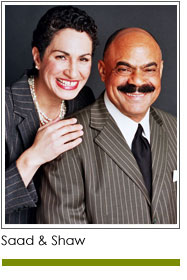 Nonprofits are ahead of the game when it comes to diversity. Is that true? We may tell ourselves that, but diversity – and most importantly inclusion – requires we take an honest look at our organizations.
Nonprofits are ahead of the game when it comes to diversity. Is that true? We may tell ourselves that, but diversity – and most importantly inclusion – requires we take an honest look at our organizations.
We recently participated in a Strategic Diversity Course offered by the National Organization for Workforce Diversity. We were part of a small group with the opportunity to learn and discuss. The goal: to help our organizations implement and improve diversity and inclusion initiatives. The facilitators and speakers were clear: diversity is about more than equity, legal requirements, and fairness. It’s about innovation: diversity and inclusion drive innovation, and innovation is key to success in the marketplace.
Nonprofits – like businesses – need to continuously innovate in order to respond to needs and changes in our environment. We may think our organizations are diverse, but sometimes we may not see clearly. Diversity is the mix of people. It is about race and ethnicity, and it’s about more than that. It’s about gender (including gender identity), immigration status, physical ability, military service, national origin, educational attainment, sexual orientation, religion, age, and more. Inclusion is the state of being valued so you can best participate in the life of the organization. Organizations with limited diversity or without an inclusive culture can find they lack the ability to meet the needs of diverse clients, or are challenged in problem solving and innovation.
Recruiting a diverse employee team or board is an important first step. Creating an organizational culture that values each person’s perspectives, abilities and contributions is another. And it is increasingly important to employees: two thirds of job candidates report that workplace diversity is important when evaluating job offers.
The following are a few key take-away points.
“Contribution versus fit” and “potential vs. performance.” We were asked to consider which of these drive hiring and promotion decisions, and what the implications are. Who benefits from these conscious and unconscious decisions? How is the organization as a whole impacted?
Who triggers the diversity conversation? It makes a difference: without the commitment of leadership – and an investment of time – it will be next to impossible to create and sustain a culture of diversity and inclusion. We were reminded that the diversity conversation – like any conversation – is engaging and ongoing, not a presentation.
Another topic discussed was “brand.” Here’s a different perspective: your brand is what people who don’t work for you think of your organization. Your team might believe it is diverse and inclusive, but you may want to check that out. We were reminded that as a country we are “graying and browning,” increasing the imperative to build diverse teams. Other advice included: “be committed to overcoming unconscious bias.”
We will talk more about these in future columns. Please send your comments about growing a diverse and inclusive organization to news@saadandshaw.com.
Workshop facilitators and speakers included Dr. S. Keith Hargrove, Stephanie Johnson, Jacky Akbari, and Ron Harris, Chief Diversity Officer, Blue Cross Blue Shield of Tennessee. Learn more at nowdiversity.org.
Copyright 2016 – Mel and Pearl Shaw
Mel and Pearl Shaw are authors of the new book FUNdraising Good Times Classics Vol. 1 now available on Amazon.com. For help growing your fundraising visit www.saadandshaw.com or call (901) 522-8727.












